I would like to draw angles on the perimeter of a circle. This solution with grid package looked promising Circular plot with vectors in R for the customisation I need but I'm having trouble plotting my angles on the edge of the circle.
This is close to what I need with circular package. It has arrows that intersect the circle edge at specific angles and more angles plotted as points on the perimeter
angles <- read.table(text ='
degree Year
120 2000
30 2001
160 2002
35 2003
150 2004
90 2005
70 2006
20 2007',header=T)
angles = circular(angles$degree, units = "degrees",
template = "geographics")
plot(angles, col = "black",stack=F)
arrows.circular(limits, col = c("red","red","blue"))
However, I'm having trouble with using grid package for segments and points. I thought a solution might be to convert the angles to cartesian coordinates using a function here <https://gis.stackexchange.com/questions/465134/create-conical-gradient-around-a-point-using-r< but that doesn't give me the result I need.
a=57
b=75
c=42
limits<-data.frame(lims=c(a,b,c))
angles <- read.table(text ='
degree Year
120 2000
30 2001
160 2002
35 2003
150 2004
90 2005
70 2006
20 2007',header=T)
limits.custom <- function(limits){
pushViewport(viewport(layout.pos.col=2,layout.pos.row=2))
apply(limits,1,function(x){
pushViewport(viewport(angle=x['lims']))
grid.segments(x0=0.5,y0=0.5,x1=0.8,y1=0.5,gp=gpar(lty=5,lwd=2))
popViewport()
})
popViewport()
}
circ_coords <- function(r, t, h, k){
t <- t * pi/180
x <- r * cos(t) + h
y <- r * sin(t) + k
z <- c(x, y)
names(z) <- c('X', 'Y')
return(z)
}
angles.custom <- function(angles){
pushViewport(viewport(layout.pos.col=2,layout.pos.row=2))
apply(angles,1,function(x){
coord<-circ_coords(r=0.5,t=x['degree'],h=0.5,k=0.5)
grid.points(x=coord["X"],y=coord["Y"],gp=gpar(pch=16))
})
popViewport()
}
pushViewport(viewport(layout.pos.col=2,layout.pos.row=2))
grid.circle(x=0.5,y=0.5,r=0.5,gp = gpar(ltw=c(3),col=c('black')))
limits.custom(limits)
angles.custom(angles)
pushViewport(viewport(layout.pos.col=2,layout.pos.row=2))
grid.segments(x0=0.5,y0=0,x1=0.5,y=1,gp=gpar(col='grey'))
grid.segments(x0=0,y0=0.5,x1=1,y=0.5,gp=gpar(col='grey'))
popViewport()

